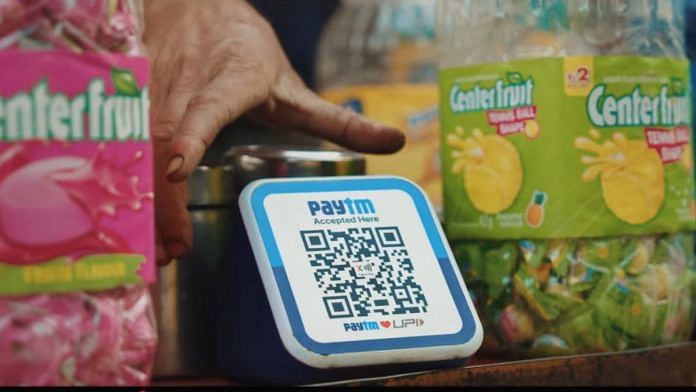The Paytm soundbox, a regular feature of local shops and kirana stores, just got a Center Fruit upgrade.
In what can be termed as an innovative marketing move, the bubblegum brand taps into two highly frequented consumer touchpoints: neighbourhood shopkeepers and digital payments.
The commercial shows how the Paytm voicenote, which is heard after every successful payment, gets a Center Fruit twisṭ̣, adding fun to routine purchases.
It goes like this—“Paytm par Rs 20 prapt hue. Dhanya laplapalap vaad. maaf kijiye voh Centrefruit dikh gayi. aap bhi le lijiye (Rs 20 received on Paytm. Thank laplapalap you….Sorry just saw Centrefruit, you also buy it).”
The campaign — Scan, Pay and Laplap — injects freshness and surprise into mundane digital transactions.
This idea integrates the bubblegum seamlessly into a behaviour that millions of Indians practice daily—digital payments.
The one-minute-three-second-long commercial cleverly uses sound—a powerful, underutilised sensory trigger in marketing—to boost brand recall. The familiar and quirky ‘laplaplap’ immediately connects consumers to the product.
The commercial is natural, joyful, and memorable.
Also read: Boomer failed to capitalise on Bumrah’s star power. Its lollipop ad is painful to watch
Leaning into chaos
Who can forget the “Kaise jeeb laplapaye?” series of ads that entertained the audiences. Launched in the early 2000s as a sub-brand under Center Fresh, Center Fruit, was Perfetti Van Melle’s answer to India’s growing appetite for chewing gums.
Center Fruit was introduced as a fruit-flavoured variant to the already popular mint-flavoured Center Fresh.
But how do you market that sensation on the screen? The brand decided to personify the tongue.
The idea was to communicate that as soon as the taste buds encounter Center Fruit’s juicy filling, they behave like an excited puppy that is out of control.
We witnessed a singer dominating a duet with unstoppable vocals, a banana seller moving at lightning speed, and even a cow racing ahead with a cart — all thanks to a sight of Center Fruit.
But one of the most iconic commercials to date from Center Fruit’s creative team has been the audition for a waiter. The owner of a South Indian restaurant is looking for a waiter who can memorise the menu by heart and speak the dishes in a flow. And, Center Fruit, once again, gets the job done.
One of the candidates starts with listing a bunch of South Indian dishes like idli sambar, vada, and as soon as he sees Center Fruit his tongue experiences a roller coaster ride. His non-stop vocabulary leaves the restaurant owner impressed, and the audience rolling on the ground.
These commercials were a blend of physical comedy, exaggeration, and relatability. The extreme, often cartoonish response to flavour became symbolic of how irresistible Center Fruit was.
The phrase “Kaise jeeb laplapaye” and its regional variants quickly became a pop culture reference.
This was also the time when the ads broke category codes. No educational “here’s how it’s made” tone. No clean, soft “flavoured candy” messaging. It was pure humor.
The brand’s voice became that of a mischievous teen who doesn’t care what’s proper, as long as it’s fun.
The creative team hasn’t updated the tagline or ditched it for something trendier. They understand the brand identity.
The ads dramatise and highly exaggerate what the product does—juicy explosions that make the tongue go wild.
Above all, the phrase “Kaise jeeb laplapaye?” feels like it came from the streets.
It sounds local, desi, and unpolished, which is precisely why it has managed to stick around all these years.
Views are personal.
(Edited by Theres Sudeep)






